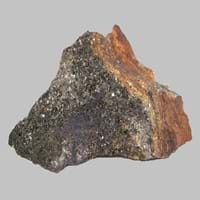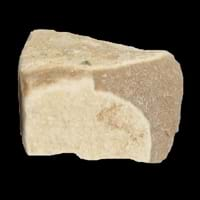Definition
Hornfels is a metamorphic rock formed by the contact between mudstone or other clay rich rock, and a hot igneous body, and represents a heat altered equivalent of the original rock
Mudstone is a fine-grained, dark gray sedimentary rock, which is formed from silt and clay and is similar to shale but has less laminations
Origin
New Zealand
Unknown
Discoverer
Unknown
Unknown
Etymology
From German which means hornstone
From the English mud and stone, from low German mudde and stainaz
Class
Metamorphic Rocks
Sedimentary Rocks
Sub-Class
Durable Rock, Soft Rock
Durable Rock, Soft Rock
Group
Not Applicable
Not Applicable
Other Categories
Fine Grained Rock, Opaque Rock
Fine Grained Rock, Opaque Rock
Texture
Granular, Platy
Clastic
Color
Brown, Dark Greenish - Grey, Green, Reddish Brown
Black, Blue, Brown, Green, Grey, Orange, Red, White, Yellow
Durability
Durable
Durable
Appearance
Dull
Rough and Dull
Interior Uses
Decorative Aggregates, Flooring, Homes, Interior Decoration
Decorative Aggregates, Entryways, Floor Tiles, Interior Decoration
Exterior Uses
As Building Stone, As Facing Stone, Garden Decoration, Office Buildings, Paving Stone
As Building Stone, As Facing Stone, Paving Stone, Roof Tiles
Other Architectural Uses
Curbing
Curbing
Construction Industry
for Road Aggregate, Roadstone
Cement Manufacture, Construction Aggregate, for Road Aggregate, Making natural cement, Raw material for the manufacture of mortar
Medical Industry
Not Yet Used
Not Yet Used
Antiquity Uses
Artifacts, Monuments
Sculpture, Small Figurines
Commercial Uses
Cemetery Markers, Commemorative Tablets, Creating Artwork
Creating Artwork, Pottery
Types
Biotite hornfels
Marl, Shale and Argillite
Features
Smooth to touch
Available in Lots of Colors and Patterns, Smooth to touch, Very fine grained rock
Archaeological Significance
Monuments
Used
Not Yet Used
Famous Monuments
Data Not Available
Not Applicable
Sculpture
Not Yet Used
Used
Famous Sculptures
Not Applicable
Data Not Available
Figurines
Not Yet Used
Used
Formation
Due to change in environmental conditions, rocks are heated and pressurized deep inside the Earth's surface. Hornfels is formed from the extreme heat caused by magma or by the intense collisions and friction of tectonic plates.
Mudstone forms when very fine-grained clay particles are deposited in water which settle at the bottom of water bodies. They are buried and compacted by overlying sediment hence forming mudstone.
Mineral Content
Andalusite
Biotite, Chlorite, Feldspar, Micas, Muscovite or Illite, Plagioclase, Pyrite, Quartz
Compound Content
Fe, Mg
Aluminium Oxide, NaCl, CaO, Iron(III) Oxide, Silicon Dioxide
Types of Metamorphism
Not Applicable
Not Applicable
Types of Weathering
Biological Weathering
Chemical Weathering, Mechanical Weathering
Types of Erosion
Chemical Erosion, Glacier Erosion, Sea Erosion, Water Erosion, Wind Erosion
Chemical Erosion, Sea Erosion
Grain Size
Fine Grained
Very fine-grained
Fracture
Conchoidal
Not Available
Porosity
Highly Porous
Highly Porous
Compressive Strength
Not Available
Toughness
Not Yet Found
2.6
Specific Gravity
3.4-3.9
2.2-2.8
Transparency
Opaque
Opaque
Density
0.25-0.30 g/cm3
2.4-2.8 g/cm3
Resistance
Heat Resistant, Impact Resistant, Pressure Resistant
Heat Resistant, Impact Resistant
Deposits in Eastern Continents
Asia
Bangladesh, Bhutan, China, India, North Korea, Qatar, Russia, Saudi Arabia, South Korea, Thailand
Bangladesh, China, India, Russia
Africa
Cameroon, East Africa, Tanzania, Western Africa
Ethiopia, Kenya, Morocco, South Africa, Tanzania
Europe
United Kingdom
Austria, France, Germany, Greece, Italy, Romania, Scotland, Spain, Switzerland
Others
Not Yet Found
Not Yet Found
Deposits in Western Continents
North America
Canada, USA
USA
South America
Bolivia, Brazil, Colombia, Ecuador
Bolivia, Chile, Colombia, Ecuador, Peru, Venezuela
Deposits in Oceania Continent
Australia
New South Wales, New Zealand, Queensland, Western Australia
New South Wales, New Zealand, Queensland, Victoria, Western Australia
All about Hornfels and Mudstone Properties
Know all about Hornfels and Mudstone properties here. All properties of rocks are important as they define the type of rock and its application. Hornfels belongs to Metamorphic Rocks while Mudstone belongs to Sedimentary Rocks.Texture of Hornfels is Granular, Platy whereas that of Mudstone is Clastic. Hornfels appears Dull and Mudstone appears Rough and Dull. The luster of Hornfels is shiny while that of Mudstone is dull. Hornfels is available in brown, dark greenish - grey, green, reddish brown colors whereas Mudstone is available in black, blue, brown, green, grey, orange, red, white, yellow colors. The commercial uses of Hornfels are cemetery markers, commemorative tablets, creating artwork and that of Mudstone are creating artwork, pottery.










